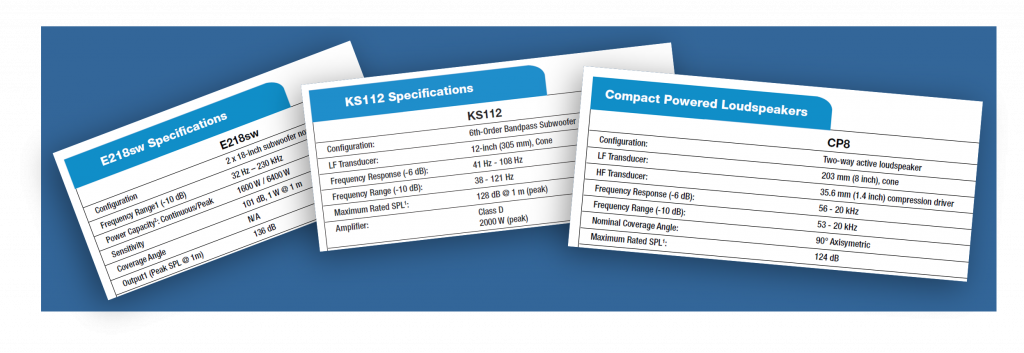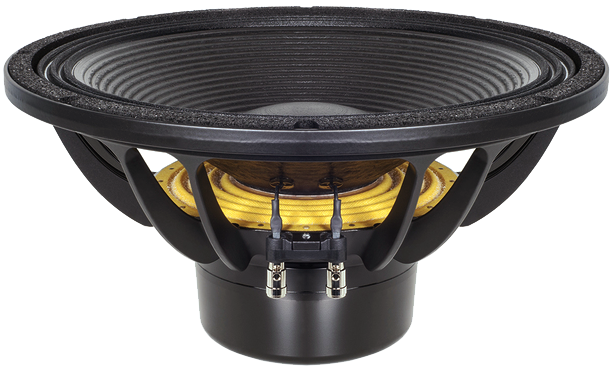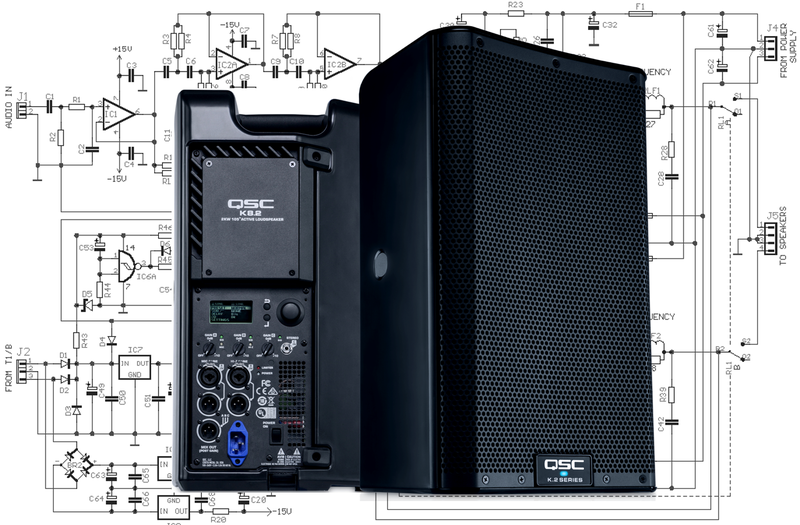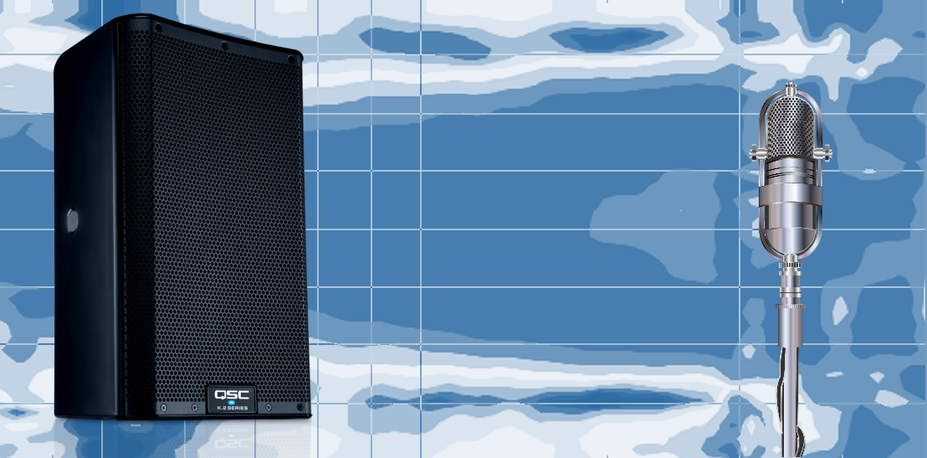Loudspeakers can be described and specified in a number of different ways, making a buying decision more complicated than it needs to be. Therefore, having some understanding of the jargon used to specify loudspeakers is essential to make sure the product you are buying is the right one for your needs. For passive loudspeakers, the maximum admissible power rating (in watts) is probably the most important parameter to ensure safe operation and good sound quality.
However, with active loudspeakers, which have a different design paradigm, there are several parameters to consider. The aim of this article is to clarify a few of these parameters and explain the relationships between them. In short, watts does not equal sound pressure level. Let’s find out why?

The Meaning of Driver Sensitivity
First, a loudspeaker driver is a transducer that converts an electrical audio signal into sound waves. In a loudspeaker, each individual driver has a set of technical specifications and one of them is called its sensitivity. A drivers’ sensitivity is a measure of the relationship between the power fed to it and the sound output generated (SPL). A driver’s sensitivity is measured in decibels (dB), at one meter (3.3 ft) from the unit, by feeding it one watt (2.83 volts for a driver with an 8 ohm impedance) of electrical energy. As an example the specification could read 87 dB (1w/1m). Sensitivities of different drivers can be compared because the audio industry has established the above measurement standard.
The higher the sensitivity rating of a driver, the louder it will play with a certain amount of input power (wattage). Sensitivity measurements of 88 dB (1w/1m) are about average and anything below 84 dB (1w/1m) is considered poor. Sensitivity equal or higher than 92 dB (1w/1m) are sought after.
Let’s recall here also that in order to increase the output of a driver by 3 dB you will need to double the amplifier power. To increase the output by 6 dB, you will need to increase the power by a factor of four, etc. For example, if a driver has a sensitivity of around 88 dB (1w/1m), you will need two watts to obtain 91 dB at 1 meter.
Note also that drivers’ sensitivity figures are used to calculate how loud a driver will be at a given distance with a given amplifier power. It does not indicate sound quality or lack of sound quality.
How about Driver Efficiency
Drivers’ sensitivity and efficiency are related but not identical. Although, in general discussions among non-technical people both terms are often interchanged. Efficiency is the ratio between amplifier input power and driver acoustic output power. It is usually stated as a percentage, rather than watt per meter, which relates to sensitivity.
The truth is that drivers are not very efficient at converting amplifier electrical power to acoustic power. Drivers’ efficiency are normally around 0.1% – 2%, which tells you that most of the power sent to a driver ends up as losses (mechanical resistance, friction, heat, etc) and not sound.
Drivers’ Physical Limitations
At this point, you may wonder why manufacturers do not produce drivers that are as sensitive as possible. The answer is that a number of compromises need to be made to achieve certain levels of sensitivity. For example, the driver cone could be lightened to improve sensitivity, but this will likely result in a more flexible cone, which will tend to increase the overall distortion. Often, transducer engineers have to reduce the sensitivity in order to eliminate unwanted peaks in a driver’s response. The optimum designs are the results of balanced compromises. Briefly, two parameters limit a driver’s power handling.
Thermal limitations. Excessive power will heat voice coils (a voice coil is made of a coil of wire that drives the cone of a transducer according to the signal current flowing in it) to the point where they can expand and bind up in the voice coil gap. Heat can deform voice coils, soften adhesives, burn crossover resistors, etc. In addition, a transducer loses typically 3 dB of its sensitivity when driven near the protection level and this phenomenon is known as power compression.
Mechanical excursion. Excessive power input can force the driver to have large excursions, possibly farther than they were designed to. This can cause the driver’s voice coil to move out of the magnet gap, misalign and never return to its original position.

What if the Measurement Distance is increased
The further away you are from a driver (scientifically called an audio ‘point source’), the lower the perceived sound level (volume) you will hear. Sound propagates through air and during that process, some energy is lost over distance. The general rule is that every time you double the distance, you hear a quarter of the sound level. Mathematically, in a situation in which no sound reflections occur (free-field radiation), the sound level from a point source decreases by 6 dB every time you double the distance. This principle is called the Inverse Square Law. In addition, note that in the case of line arrays (audio ‘line source’ and not ‘point source’), the sound level theoretically decreases by 3 dB per doubling the distance. This line source behavior is particularly valid above 1 kHz.
To illustrate the standard Inverse Square Law, if you use a driver that has a rated sensitivity of 86 dB (1w/1m) that is driven by a 100 watt amplifier, it will produce a sound level of 106 dB when measured at 1 meter. Double the distance to 2 meters, and the sound level will drop from 106 to 100 dB. Doubling the distance again to 4 meters will decrease the level by another 6 dB to 94 dB.
What is Sound Pressure Level (SPL)
Various people can perceive sound level differently, therefore it is highly useful to objectively measure sound levels and express them in numerical terms. To understand what sound pressure level is we must first understand what ‘Sound Pressure’ is. Sound pressure (p) is the average variation in atmospheric pressure caused by the sound, expressed in pascal (Pa).
Sound pressure level (SPL) describes the pressure of a sound wave, expressed in decibels (dB) relative to the reference pressure of 20 µP (micro-pascals) or N/m2. In other words, it is the ratio of the absolute sound pressure against a reference level of sound in the air. 0 dB SPL is the average threshold of hearing of sound at the frequency of 1 kHz for young healthy adults.
Now, most loudspeakers’ specification sheets mention two different SPL values that are defined differently.
- The Peak Sound Pressure (Lpeak) which is the maximum instantaneous sound pressure during a measurement period.
- The Equivalent Continuous Sound Pressure, which is the logarithm of the ratio of a given RMS SPL, during a stated time interval, to the reference sound pressure.
Additionally, the conditions under which the measurements were taken should always be stated along with the SPL value in order to be scientifically valid and repeatable. Example: maximum short-term sine wave acoustic output, on axis, in half space, averaged from 100 Hz to 3 kHz at 1 meter.
What about Active Loudspeaker Specifications
Active loudspeakers usually comprise one driver per frequency band, each fitted with a dedicated power amplifier and preceded by an electronic crossover filter, which separates the low-level audio signal into the frequency bands to be handled by each drivers. This approach enables the use of complex active filters on the low-level input signal, without the need to use passive crossovers and their associated compromises.
Now, you will have noticed that manufacturers of active loudspeaker systems never state driver sensitivity, efficiency or impedance. Why is that? Well, these loudspeakers are designed as complete ‘systems’, where the manufacturer has carefully chosen optimal driver sensitivity that best match each individual power amplifier section in the system. For such systems, the specifications that actually matter are the SPL values – basically, how loud these systems can reproduce sound at a given distance.
Having read this far, you now probably understand that power amplifier output capabilities as well as driver sensitivity, efficiency, impedance and physical limitations are design parameters that are variable. During the development of an active loudspeaker, R&D engineers will select the right set of parameters to achieve a certain target specification (peak and continuous SPL).

Conclusion
In active loudspeaker designs, there are myriads of power amplifier and driver parameter combinations that can technically lead to the same SPL specification. Lower sensitivity drivers will need more amplifier power, and vice-versa, different driver impedance will require different amplifier output capability, etc.
It is worth noting as well that the cost of adding more amplification power (watts) is a lot less expensive than having a driver with higher sensitivity (dB/w/m). An inexpensive driver can be paired with a higher output amplifier with a potential lower production cost than having a quality, high-sensitivity driver paired with a low-output power amplifier.
In active loudspeaker systems, the most relevant, sound-related, numerical specifications are the SPL values. In the end, always remember that the sound quality and reproduction fidelity are the most important aspects that you should focus on when choosing an active loudspeaker!
Christophe Anet
Latest posts by Christophe Anet (see all)
- History, Development and Applications of Column Loudspeakers - May 30, 2025
- Why is Dynamic Range so important? - May 30, 2023
- Differences between Flown and Floor-Mounted Subwoofer Deployments - May 2, 2023
